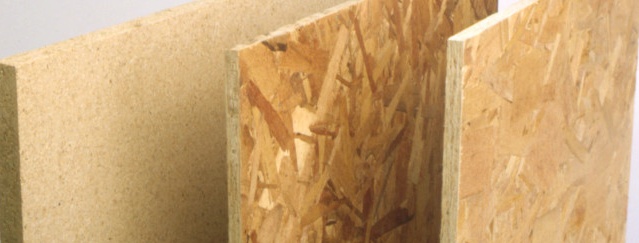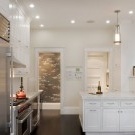How is fiberboard different from chipboard
Today, the market for building materials is simply overflowing with various products. And it is not strange that at times, people confuse different names of materials. As often happens with fiberboard and particleboard. With a similar name, these are two different materials, each of which has its own characteristics. Let's figure out what each material is intended for and how do they differ?
What are the differences between fiberboard and particleboard?
- Different manufacturing method. For fiberboard - pressing and gluing wood fibers, and for chipboard pressing and gluing wood sawdust and shavings.
- Particleboard is thicker than fiberboard, it is very noticeable visually.
- Various applications.
Let's consider in more detail what is fiberboard
Fiberboard is a fiberboard (or “overseas” name for MDF). They are obtained by pressing wood pulp, which includes cellulose, water, special additives and synthetic polymers. Pressing occurs under the influence of high temperature. The raw material is wood chips or shredded wood.
Fiberboard are general and special purpose. The latter, in turn, are divided into:
- bioresistant;
- flame retardant;
- bitumen;
- hardboard - plates, the surface of which is painted or lined.
The group of products Medium Density Fiberboard (aka MDF) is divided into several subgroups according to the density of the resulting plates:
- High Density Fiberboard (or HDF) are high density boards (up to 1050 kg / m3), corresponding to our analogue of DVPT (hardboard). The material is most often used for the manufacture of floor coverings, for example, laminated floor elements. By the way, with all the features of flooring you can findhere.
- Medium Density Fiberboard (or MDF) are medium density boards (approximately 800 kg / m3) corresponding to our analogue of fiberboard. They are used in construction and car building. Also, various furniture and carpentry structures are made from plates. Sometimes used as a basis for paintings or as containers. In general, it has a very wide scope.
- Low Density Fiberboard (or LDF) are low density boards (approximately 650 kg / m3) DVPM (wood-fiber boards soft) corresponding to our analogue. Most often used as soundproof flooring.
Also, the plates are divided into hard and soft, each of which is divided into different brands. Each brand is distinguished by its strength and surface. In general, there are a lot of varieties.
Fiberboard, like any other building material, has its own advantages and disadvantages.
- Moisture resistance. Due to the fact that there are rosin and paraffin in the fiberboard, they can even be used to decorate balconies, unlike chipboard.
- Low price. The cheap cost of the plates puts them in the category of one of the most affordable materials.
- Durability. Under proper conditions of use, fiberboard is strong enough and can last up to 30 years.
- Non-environmental friendliness. Perhaps the most important drawback of fiberboard. Due to the fact that synthetic resins are used in production, they are not very useful for humans. That is why it is forbidden to produce children's furniture from fiberboard.
What is chipboard
Particleboard is a chipboard. Sometimes the word "chipboard" refers to wood-laminated plastics. But most often under the abbreviation “Particleboard” they mean precisely the plates, although it will be more correct to use chipboard.
The material is produced by pressing wood chips. Resins and special additives are added to the same chips.
Particleboard is classified by the following properties:
- number of layers - 1, 2, 3 or multi-layer;
- the outer layer is a fine or coarse-grained surface;
- water resistance and fire resistance;
- density - small, medium or high;
- and other criteria.
Particleboard is used for the production of furniture, various building elements, wagons and containers.
Particleboard has its drawbacks
- Resins that are present in the plates, over time, begin to secrete substances harmful to humans. It is noteworthy that in Russia low-grade boards are produced that are hazardous to health. In Europe, only plates of the highest safety class are manufactured.
- Particleboard does not hold the fastening material very well: nails and screws. Especially when reassembling.
And the advantages of chipboard are expressed in high moisture resistance and fire safety, as well as in low cost. As we have seen, despite similar names, chipboard and fiberboard are different materials.



